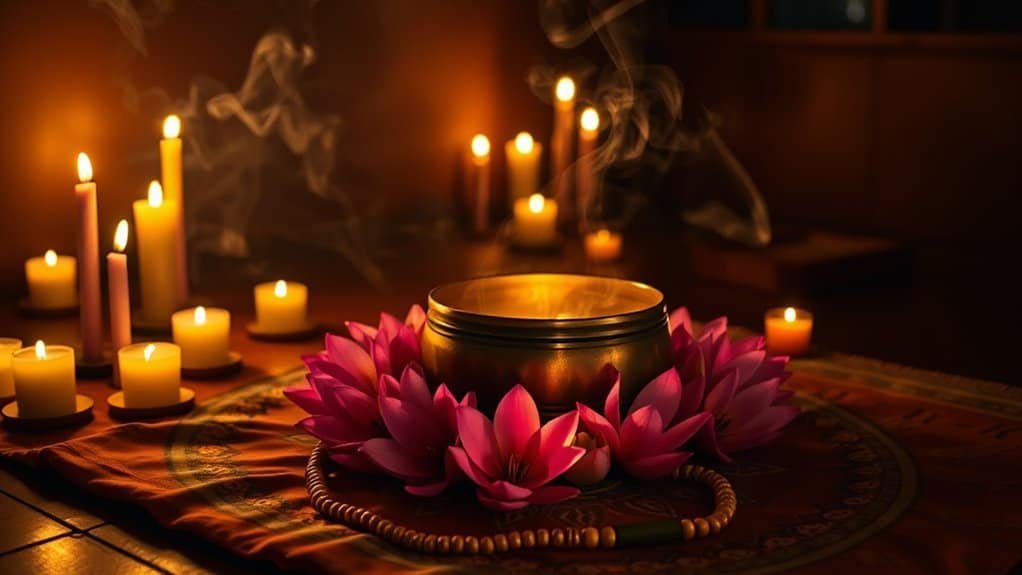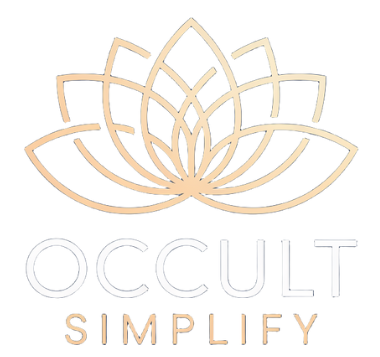How to Chant Mantras for Maximum Effect

To maximize the effect of mantra chanting, find a quiet, uncluttered space for focus. Close your eyes, breathe deeply, and set a clear intention.
Choose a resonant mantra, such as “Om” for universal energy or “So Hum” for self-discovery. Use mala beads to track repetitions and experiment with chanting aloud and silently.
Stay aware of your emotions and sensations during practice. This mindfulness will lead to deeper insights over time.
Understanding the Power of Mantras

Exploring mantras involves engaging with a centuries-old practice known for its transformative power. Mantras are sounds that can shift energy and focus the mind.
Chanting a mantra creates vibrations promoting clarity and calmness. For instance, “Om” connects you to universal energy, while “So Hum” helps you find your inner self.
These phrases anchor you in meditation and daily challenges. Embrace your voice’s rhythm to discover this ancient practice‘s profound impact.
Preparing Your Mind and Space
To embrace mantra chanting, prepare your mind and space to enhance the experience.
Find a quiet, clutter-free area, even a small corner. Focus your thoughts by closing your eyes, breathing deeply, and releasing distractions.
Set an intention to guide your chanting. Cultivating a peaceful mindset and atmosphere opens you to the power of your mantras.
Choosing the Right Mantra

To find a mantra that resonates with you, consider what you want to achieve, such as peace, strength, or love.
Explore various traditional mantras like “Om” for universal connection or “So Hum,” meaning “I am that.”
Alternatively, create your own by combining inspiring words.
Pay attention to how it feels when you say it; the right mantra should evoke positive emotions and calmness.
Trust your intuition and try different ones until you find the one that truly speaks to you.
Techniques for Effective Chanting
Choose a mantra that resonates with you and enhance your chanting practice with these tips:
- Find a Quiet Space: Opt for a calm environment to avoid disturbances.
- Set an Intention: Clearly define your purpose before starting.
- Use a Mala Bead: Utilize mala beads to track repetitions and enhance focus.
- Chant Aloud or Silently: Experiment with both methods to find what suits you best.
Incorporating Breath and Rhythm

Enhance your mantra chanting by incorporating breath and rhythm for a deeper connection.
Focus on deep inhalations before starting, and slow exhalations as you chant to stay grounded and centered.
Match your chant’s rhythm to your breath, using one syllable per breath for a calming effect, or follow a steady beat with natural voice modulation.
Experiment with different tempos to find what feels natural and uplifting.
Aim to harmonize body and mind, enriching your chanting experience.
Reflecting on Your Experience
Reflect on your mantra chanting experience to enhance future practices. Consider these aspects:
- Emotional Shifts: Observe changes in your feelings before and after chanting.
- Focus and Clarity: Note moments of heightened concentration.
- Physical Sensations: Be aware of your body’s response, whether relaxation or energy.
- Spiritual Connection: Recognize any connection to something larger than yourself.
Journal these reflections to refine your practice and unlock the full potential of your mantras.
Frequently Asked Questions
Can I Chant Mantras Silently Instead of Aloud?
Yes, you can chant mantras silently. Many find that internal chanting can still focus the mind and connect to the energy of the mantra. It’s all about your intention and how you resonate with the practice.
Is There a Specific Time of Day for Chanting?
Just like the sunrise brings clarity, early mornings are ideal for chanting. It’s quiet, your mind’s fresh, and you’re more connected. Choose a time that feels right for you, but mornings often work best.
How Long Should I Chant Each Mantra?
You should aim to chant each mantra for at least 10 to 15 minutes. This duration allows you to connect deeply, enhancing focus and intention while fostering a more profound experience during your practice.
Can Children Participate in Mantra Chanting?
Absolutely, children can join in mantra chanting! You might worry they won’t focus, but their natural curiosity and enthusiasm often lead to genuine connection. Just guarantee the environment’s welcoming, and watch their joy unfold.
What Should I Do if I Lose Focus While Chanting?
If you lose focus while chanting, gently bring your attention back. Take a deep breath, recenter your mind, and try to visualize the mantra’s meaning. Consistency will improve your concentration over time.
Conclusion
Chanting mantras can transform your life, with just 10 minutes daily significantly reducing stress. Be patient and open-minded, as each session brings you closer to clarity and peace. Embrace the journey without expecting immediate results; dedication and the right mindset will deepen your practice, offering greater insight and calm.
